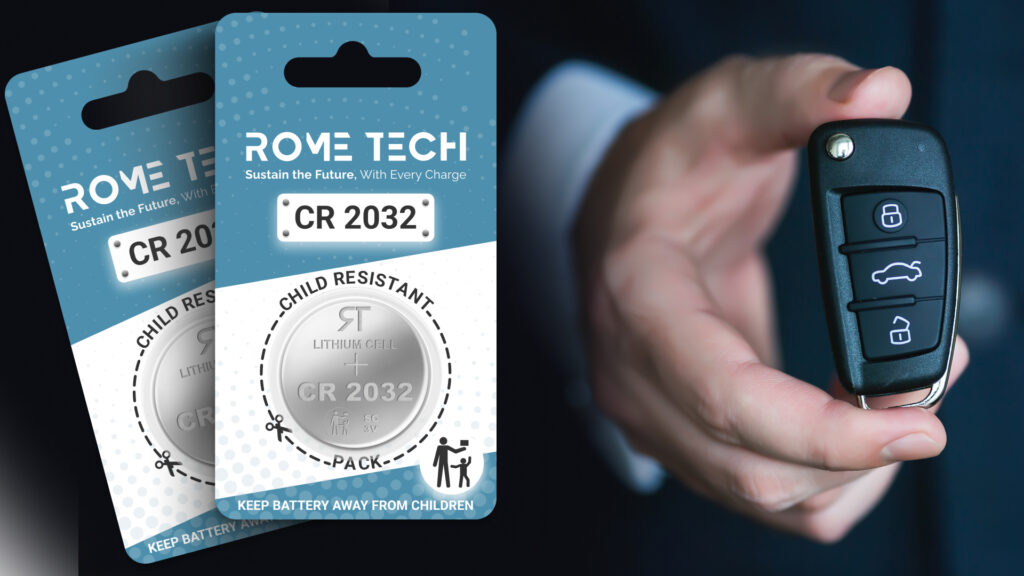
Modern car key fobs have become an indispensable part of our driving experience, seamlessly integrating convenience and security into our daily routines. These compact devices utilize a small battery to power their electronic functions, allowing us to lock and unlock doors, start our vehicles remotely, and even track our cars’ location. Unlike traditional batteries that require frequent charging, car key fob batteries are designed for long-lasting performance, often lasting several years before needing replacement. This eliminates the need for regular charging, making car key fobs a truly hassle-free part of modern driving.
This article delves into the inner workings of car key fobs, exploring the types of batteries they use, their impressive lifespan, and the convenience they offer drivers. We’ll also provide a step-by-step guide on how to replace a car key fob battery when it eventually needs replacing.
Car Key Fob Battery Types
Car key fobs primarily utilize small coin cell batteries, typically measuring around 3 volts. These batteries are chosen for their compact size, long lifespan, and ability to provide consistent power output. While the specific type of coin cell battery may vary depending on the make and model of your vehicle, they generally fall under two categories: lithium-ion and alkaline.
Lithium-ion batteries are known for their high energy density, meaning they can store more energy in a smaller package. This translates to longer battery life compared to alkaline batteries. However, lithium-ion batteries can be more expensive than alkaline counterparts. Alkaline batteries, on the other hand, offer a more affordable option but typically have a shorter lifespan.
Long Lifespan of Coin Cell Batteries
One of the most significant advantages of car key fobs is their long battery life. Coin cell batteries are designed to provide reliable power for several years, often exceeding three years in normal usage. This extended lifespan is attributed to several factors:
- Low Power Consumption: Car key fob functions like locking and unlocking doors, as well as remote start, require relatively low amounts of power.
- Efficient Circuitry: Modern car key fobs utilize efficient circuitry that minimizes energy consumption.
- Battery Management Systems: Some vehicles incorporate battery management systems that optimize power usage and extend battery life.
Remote Functionality with Key Fobs
Car key fobs have revolutionized the way we interact with our vehicles, introducing a level of convenience and control previously unimaginable. Remote locking and unlocking features allow us to secure our cars from a distance, eliminating the need to physically approach the vehicle every time.
Furthermore, many modern key fobs offer remote start capabilities, enabling drivers to warm up or cool down their vehicles before entering them. This is particularly beneficial in extreme weather conditions, ensuring a comfortable driving experience. Some advanced key fobs even incorporate features like trunk release and panic buttons, further enhancing their functionality and convenience.
Convenience and Hassle-Free Operation
The long battery life and remote functionality of car key fobs contribute significantly to their overall convenience. Drivers no longer need to worry about frequently charging their key fobs or carrying bulky spare keys. The compact size and lightweight design of key fobs make them easy to carry in pockets or purses, ensuring they are always readily accessible.
The seamless integration of key fob technology into modern vehicles has streamlined the driving experience, allowing drivers to focus on the road while enjoying a high level of control and convenience.
Replacing a Car Key Fob Battery
While car key fob batteries are designed for long-lasting performance, they will eventually need replacement. Fortunately, replacing a car key fob battery is a relatively simple process that can often be done at home using basic tools.
Steps to Replace a Car Key Fob Battery:
- Locate the Battery Compartment: The battery compartment is typically located on the back of the key fob. Look for a small button or tab that needs to be pressed to open the compartment.
- Remove the Old Battery: Once the compartment is open, carefully remove the old battery using your fingers or a small tool.
- Insert the New Battery: Insert the new battery, ensuring it is oriented correctly according to the polarity markings inside the compartment.
- Close the Compartment: Securely close the battery compartment by pressing the button or tab back into place.
If you are unsure about the process or encounter any difficulties, consult your vehicle’s owner’s manual or seek assistance from a qualified mechanic.
Conclusion
Car key fobs have become an integral part of modern driving, offering a convenient and secure way to interact with our vehicles. Their long-lasting coin cell batteries eliminate the need for frequent charging, while their remote functionality provides unparalleled control and convenience. Replacing a car key fob battery is a straightforward process that can be easily accomplished at home. As technology continues to evolve, we can expect even more innovative features and functionalities to be integrated into future car key fobs, further enhancing our driving experience.
